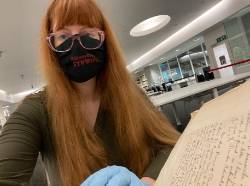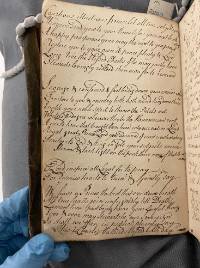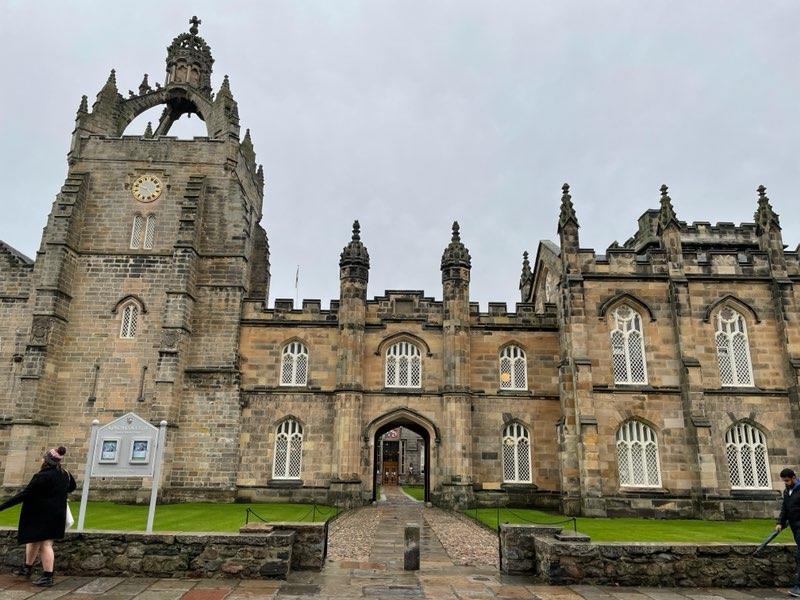I arrived in Aberdeen, Scotland on the morning of Monday, October 25th, having taken a redeye flight out of New York that connected through London. Though exhausted from travel and COVID-19 travel requirements, I was focused on seeing the historical sites around the city but most importantly, visiting the University of Aberdeen’s archives. My research emphasizes the role of women martyrs in seventeenth-century Scottish history, exploring their experiences and reception in spaces where previous historians have often focused on men. The women I study were religious and political dissidents, and through their sacrifices also became major figures in the stories told by their communities for centuries.

Due to COVID-19 restrictions, international travel is a large hurdle to get over for graduate students who currently need to do research essential to their projects. Travel is harder to get approval for, more expensive due to needed repeated COVID-19 testing throughout the trip, and many archives are still currently closed to outside visitors. The University of Aberdeen Special Collections is one of these and is still currently closed to outside visitors, but through a series of emails with the archivist there over the course of a few months I was given special approval to visit. Because of this I was the only person in the reading room while doing research, a unique experience.

The University of Aberdeen has one of the largest collections of Jacobite materials in the world. During my visit, I read and photographed hundreds of pages of personal correspondence, military correspondence, oaths, sermons, songs, poetry, and other written material related to Jacobite history. What I found to be particularly useful and interesting were works related to women in the Jacobite movement, as historical works on women in Scottish history are still lacking in number in comparison to other subjects. This is something that I hope to address in my dissertation using the material I viewed at the University of Aberdeen.
Some documents I viewed were particularly fragile and had to be looked at through plastic sleeves while wearing gloves to preserve them. At one point an archivist kindly helped me to view an oath I requested, which over the course of the hundreds of years since it had been written had been folded many times and presented a challenge to lay it flat without causing any damage.
During my trip I also had the opportunity to visit Culloden Battlefield. Culloden is the site where the Jacobites fought their last stand against the British Government during the 1745 Rebellion. Many Highlanders and their leaders died during the battle. It was their loss at Culloden that effectively ended any legitimate Jacobite movement in Scotland and greatly hindered the Highland clans going forward in their relationship with the government.
The “Power of Place” is a concept often referred to in the field of Public History, which includes museums and historic sites. It is the idea that humans can develop more emotional ties to and better understandings of historical figures and events by being in the places where the figures lived and the events took place. Being able to visit Aberdeen and Culloden Battlefield was an incomparable learning experience. Incomparable not only because of the research I was able to conduct in the archives which will greatly contribute to my dissertation, but also through the experiences I gained in the environment itself.
